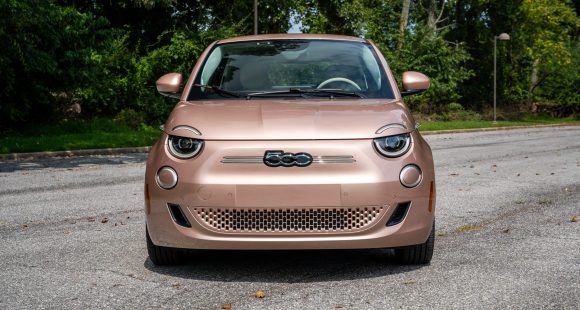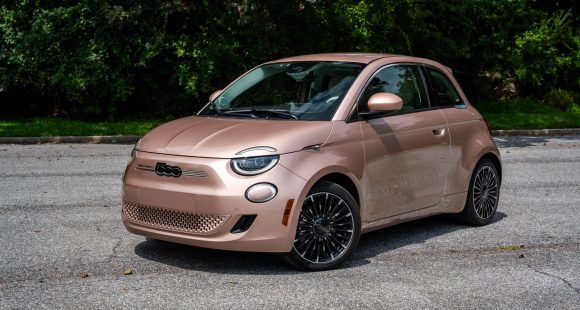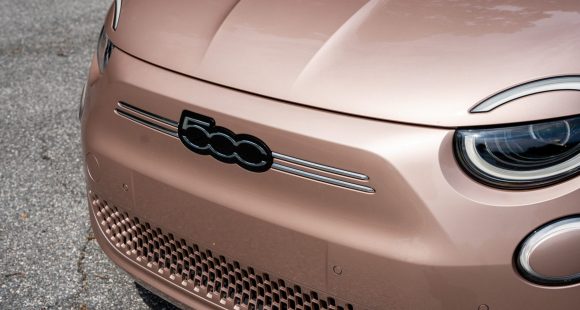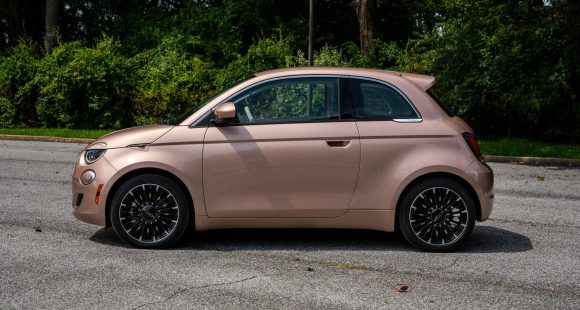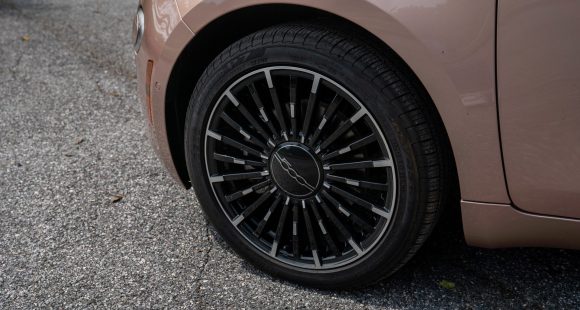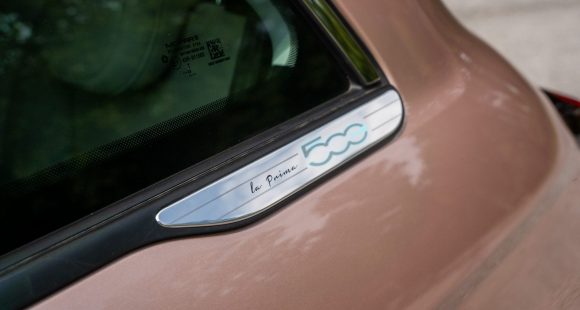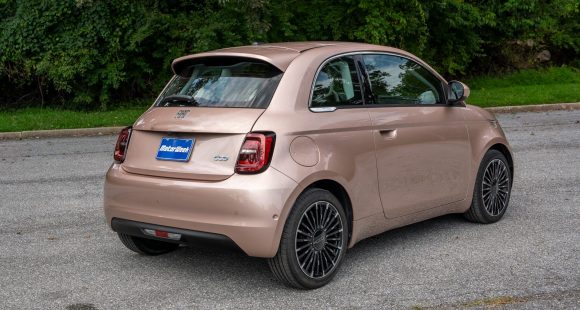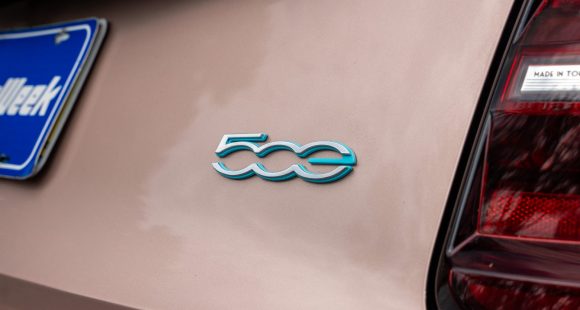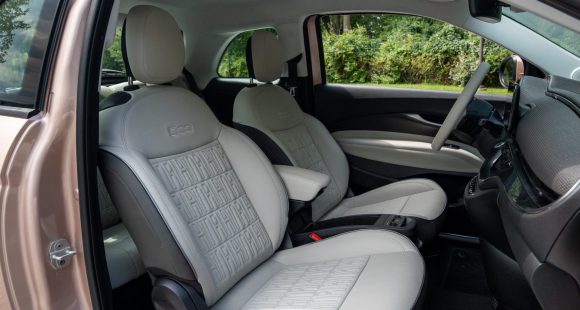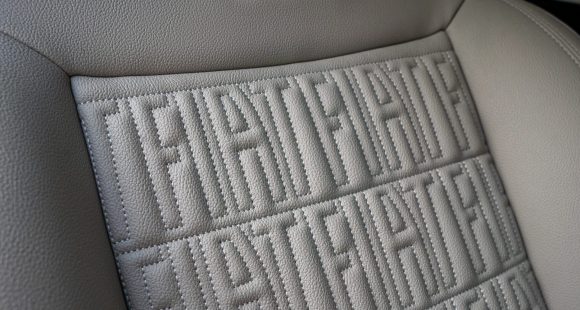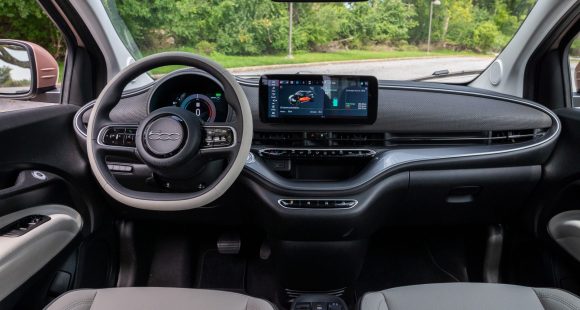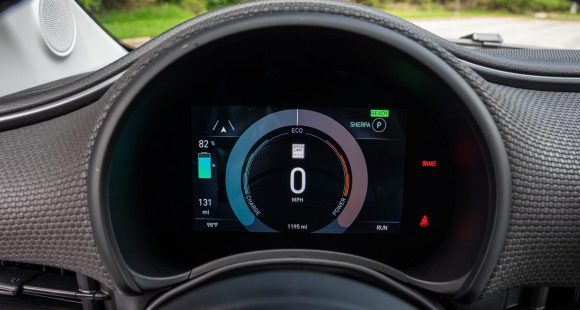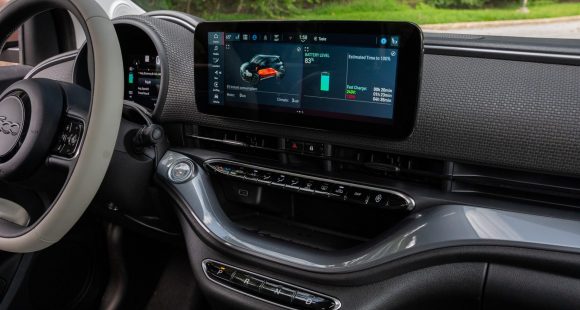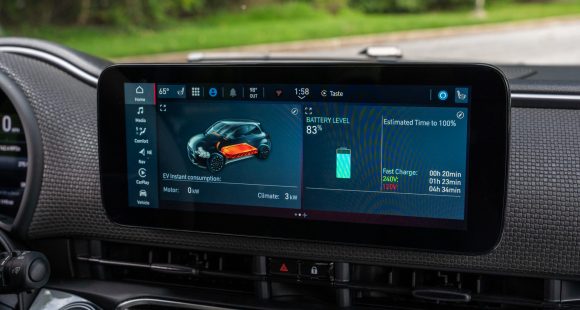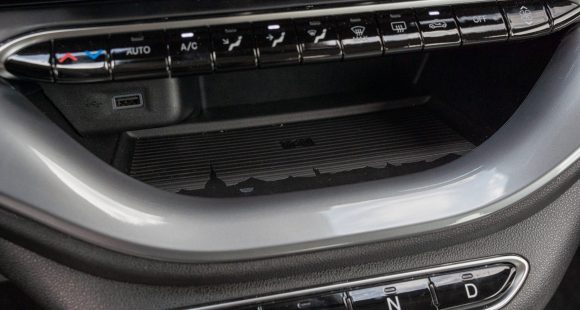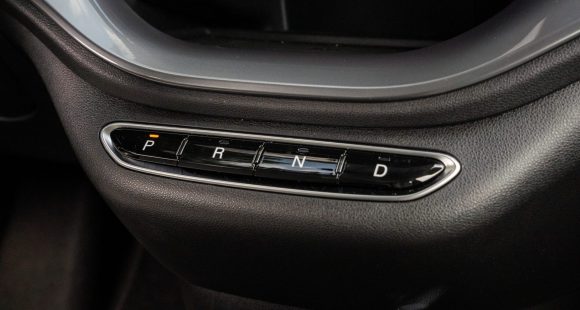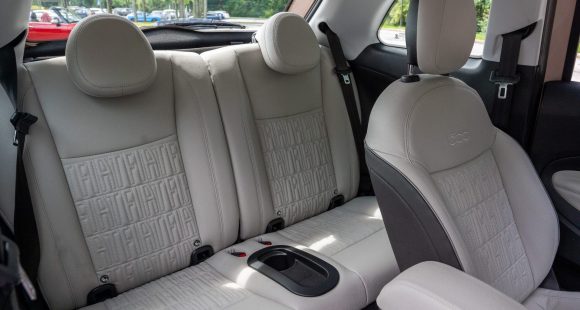2013 Volkswagen Jetta Hybrid
Up until now, Volkswagen’s preferred method of maximizing mileage has with TDI turbocharged diesel engines. But despite wider availability, and ever cleaner exhausts, high diesel fuel prices have stalled their appeal to Americans. What to do? Well, you could turbocharge a small gasoline engine as many automakers are doing to EcoBoost their mileage, and of course there’s always hybrid powertrains. Well, how about combining the two… in the Jetta!
 You won’t see turbo in the name, but the 2013 Volkswagen Jetta Hybrid does indeed get down the road with a combination of internal combustion, forced air induction, and electric power. And it all works fairly seamlessly, though you can feel some shudder when the gas engine engages and disengages. It’s not disturbing; just more of a reminder of what exactly is going on.
You won’t see turbo in the name, but the 2013 Volkswagen Jetta Hybrid does indeed get down the road with a combination of internal combustion, forced air induction, and electric power. And it all works fairly seamlessly, though you can feel some shudder when the gas engine engages and disengages. It’s not disturbing; just more of a reminder of what exactly is going on.
And, what’s going on is 1.4-liters worth of all-aluminum, direct injected, turbo-charged I4 combined with a 20kW electric motor to output 170-horsepower and 184 lb-ft. of torque. This combo produces Government Fuel Economy Ratings of 42-City, 48-Highway, and 45-Combined. That compares to 34 Combined for the TDI. Still, our lead-footed drivers netted nowhere near the hybrid ratings, averaging just 36.7 miles-per-gallon of Premium. That’s about 5% less than our last Jetta TDI. To be fair, we tested the hybrid in freezing temperatures which required additional gas engine running time so mileage should improve in warmer weather.
No disappointment with the very good Energy Impact Score of 7.3-barrels of oil burned annually with yearly CO2 emissions of 3.3-tons.
And we love almost everything about the Jetta Hybrid, as it is all so well done. The under-hood is pristine and purposeful with little hint of hybrid hardware, save for the orange high voltage cables. Trunk finish is exceptional for a non-luxury compact car; you do lose some cargo space due to the battery, 11.3 cubic-ft. versus 15.5 in a standard Jetta; but you still get fold down rear seatbacks for long item storage.
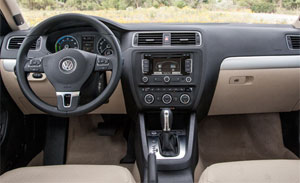 You can follow along with hybrid goings-on with a unique instrument cluster that forgoes the tach for a power gauge with readings for eco, charge, and boost. If you opt for navigation, you can also keep up with the specific hybrid screens and power flow diagrams. And there was good power flowing at the track, as the Hybrid feels every bit as spirited off the line as the standard Jetta and a bit better than the TDI. 0-60 in 8.0-seconds flat. And, that’s still with 40 MPG potential.
You can follow along with hybrid goings-on with a unique instrument cluster that forgoes the tach for a power gauge with readings for eco, charge, and boost. If you opt for navigation, you can also keep up with the specific hybrid screens and power flow diagrams. And there was good power flowing at the track, as the Hybrid feels every bit as spirited off the line as the standard Jetta and a bit better than the TDI. 0-60 in 8.0-seconds flat. And, that’s still with 40 MPG potential.
The Hybrid comes exclusively with Volkswagen’s 7–speed DSG automatic gearbox and we have no complaints about its very smooth operation or the commanding feel of its shifts as the car worked its way to the end of the ¼-mile in 16.2-seconds at 87 miles-per-hour. The Jetta’s mix of turbo and hybrid boost proved to be a great pairing; you get the e-boost off the line and once you get rolling, the turbo gets spooled up and gives you another. It’s surprising to us that it’s taken this long for such a powertrain to arrive.
When it comes to cone carving, the Jetta is by far at the top of the compact hybrid heap. The independent rear suspension comes straight from the sportier Jetta GLI and makes the Hybrid feel light yet solid, and very sport sedan like. It’s the hybrid you would expect Volkswagen to make. While on the street, the brakes may have a grabby feel because of the regenerative braking, especially at slow speeds, we were more than impressed at the track where we averaged just 119-feet to stop from 60.
The Jetta Hybrid will drive on battery power alone, but due to the small 1.1-kWh size, only for about a mile and only up to 44 miles-per-hour if E-mode is selected. But it is easily the most entertaining full hybrid out there, not so much that you forget it’s a hybrid, but pretty darn close.
 You’d be hard pressed to tell by looking at it either, as the Jetta Hybrid is not super flashy looking, and bears little indication of its new eco-friendly credentials. But the details are nice, with the blue-highlighted VW logo and hybrid badging integrated smoothly into the Jetta’s classy and understated design. It also adds a new front fascia with redesigned air inlets, unique 17-inch wheels, and a rear spoiler.
You’d be hard pressed to tell by looking at it either, as the Jetta Hybrid is not super flashy looking, and bears little indication of its new eco-friendly credentials. But the details are nice, with the blue-highlighted VW logo and hybrid badging integrated smoothly into the Jetta’s classy and understated design. It also adds a new front fascia with redesigned air inlets, unique 17-inch wheels, and a rear spoiler.
When it comes to pricing, the Jetta Hybrid starts at $25,790. If you’ve been contemplating a hybrid, but non-committal due to not wanting to drive a boring car, well here’s the car you’ve been waiting for. And since you asked, yes Volkswagen will continue to offer the Jetta TDI which is far less well equipped but still cheaper by 2-grand.
Which one is right for you? Well we can’t answer that, but the 2013 Volkswagen Jetta Hybrid is a beautifully done hybrid wrapped in a very tidy package that we would enjoy living with every day. That’s why we picked it as our MotorWeek Drivers’ Choice Best Eco Friendly. And if you were to pick one for yourself, we think it would be just as friendly to you as it is to the environment.
Specifications
- Engine: 1.4-liters
- Horsepower: 170
- Torque: 184 lb-ft.
- 0-60 mph: 8.0 seconds
- 1/4 mile: 16.2 seconds @ 87 mph
- EPA: 42 mpg city/ 48 mpg highway
- Energy Impact: 7.3 barrels of oil/yr
- CO2 Emissions: 3.3 tons/yr
2024 Fiat 500e
Fiat’s Electric Car Is Also Fiat’s Only Car
EVs are coming in all shapes and sizes these days, but few have a more recognizable shape than this pint-sized Fiat 500e. After all, it first arrived on our shores more than a decade ago. Well, much has changed since then, and there’s an all-new, second-gen 500e now hitting the streets. So, let’s see if it can keep the Fiat brand relevant here in the U.S.
Fiat returned to the U.S. for 2012 with the cute and subcompact 500. Their lineup quickly expanded with several 500-based models, including the all-electric 500e. They even launched a Mazda Miata-based roadster, the 124 Spider. Who would have thought that 12 years on, the only one left would be that 500e? For 2024, it kicks off its 2nd generation here.
At least they left us with not just any 500e, but a La Prima 500e. According to Fiat, it is “Inspired by Beauty,” as one of four trims initially available. There’s also Inspired by Music, Inspired by Los Angeles, and (RED), in parentheses, representing Fiat’s commitment to helping fight global health emergencies. A Giorgio Armani Collector’s Edition is due in 2025.
Our Inspired by Beauty 500e came painted in Rose Gold, which we have to admit may not be beautiful to everyone. But, have no fear, there are plenty of other colors available, one of which we will be adding soon to our long-term test fleet. We actually love most everything else about the exterior of this charming character, boldly showcasing its Italian flair while bringing iconic 500e style and classic proportions to the electrified era.
And it’s quite fun to drive too. Not exactly on the MINI Cooper level, but it certainly has some of that go-kart vibe, with lots of weight down low in its wide and short platform along with quick steering that has you wanting to dart in and around traffic. There’s no lack of safety and convenience features packed into this tiny package. Automatic Emergency Braking and Lane Keep Assist are standard, and inside you’ll find plenty of charge ports and even wireless device charging and integration. There’s also some fine stitch work and subtle reminders of its provenance. Front seats are plenty spacious for even large adults. The rear seats? Well, except for little ones, you’d best just fold them down for added cargo room and think of this as a two-seater hatchback.
Light steering and minimal understeer had us zipping in and out of cones with ease, with the kind of playfulness and toss-ability you can only get in a small car.
The 500e’s single 87-kW motor powers its front wheels to the tune of 117 horsepower and 162 lb-ft of torque. A 42-kWh battery charges at a max rate of 85 kW, getting you to 80% in 35 minutes on DC fast charging; but charging to 100% on Level 2 only takes 6 hours, so you can easily charge it overnight at home. The 500e’s maximum driving range is rated at 149 miles, but with all-season tires it drops to 141. Not to worry, as we were on pace for 174 miles in our driving loop. And using just 29 kWh of electricity per 100 miles, the 500e is quite efficient.
It’s not fast by EV standards, but quicker than most combustion engine subcompacts, even spinning up the tires quite a bit at our Mason Dixon test track. We got to 60 in a pretty quick 7.9 seconds; but that was also where things started to taper off. Speedometer numbers were definitely building less quickly towards the end of the quarter-mile, but for a tiny car it felt plenty smooth and stable down the track. We finished the quarter-mile in 16.2 seconds at 84 mph. There are three drive modes including “Range,” where regenerative braking allows for smooth one-pedal driving.
The 500e felt even better in our handling course, light steering and minimal understeer had us zipping in and out of cones with ease, with the kind of playfulness and toss-ability you can only get in a small car. We found we could push incredibly hard before there was any intervention from stability systems. The only things less than perfect were a touch too much body roll, and the lack of bolstering in the seats to keep us from sliding around. Coming in just under 3,000 lbs., the 500e weighs less than many ICE cars on the road. And that was evident in our braking test, where distance averaged a short 99 feet; stops were straight, fade free, and with very little nosedive.
Perhaps the most gorgeous thing of all about this new 500e is its price tag before incentives, starting with the (RED) at $34,095; from there, Inspired by Beauty, Music, and Los Angeles all have unique features, and all sticker for $37,595. That’s an inviting on-ramp to the EV lifestyle highway, especially if you can catch a cheap lease, though with the limited amount of driving range we wouldn’t stay on there for too long.
But that just means the Fiat 500e is perfectly suited for city dwellers, short distance commuters, and anyone looking for a second car for daily errands that quickly “fills-up” at home every night. Everyone should make room for a little Italian flair in their life, and that’s the Fiat 500e– equal parts charming, quirky, and fun.
Specifications
As Tested
- Motor Setup: Single 87-kW Motor
- Battery Size: 42-kWh
- Horsepower: 117
- Torque: 162 lb-ft
- EPA Range: up to 149 miles
- 0-60 mph: 7.9 seconds
- 1/4 Mile: 16.2 seconds at 84 mph
- Braking, 60-0 (avg.): 99 feet
- MW Test Loop: ~ 174 miles
- Efficiency: 29 kWh / 100 miles

















